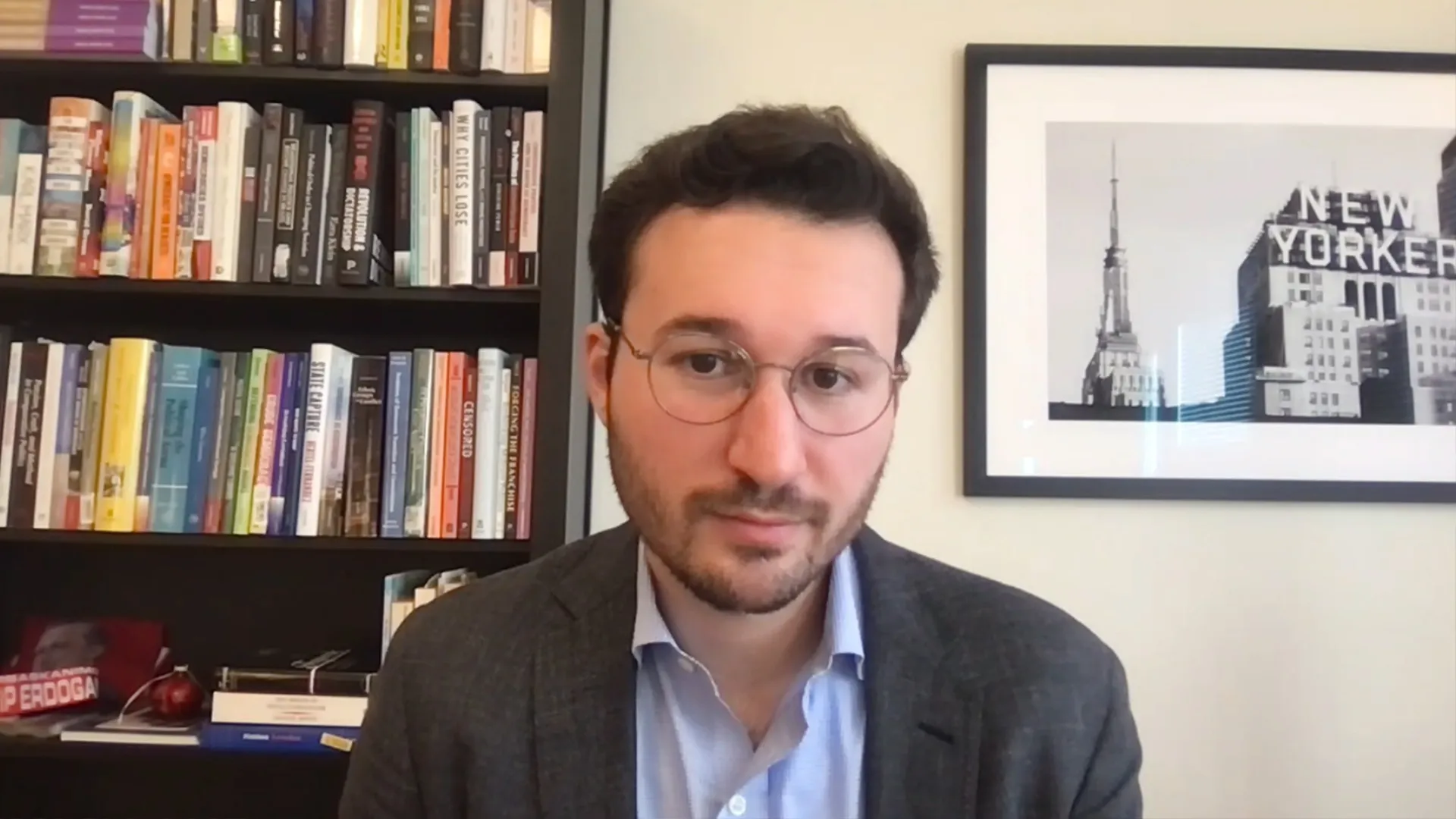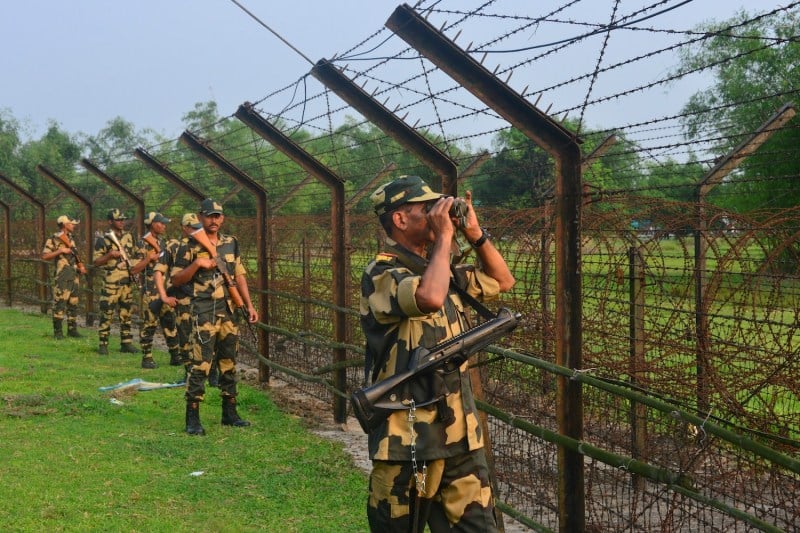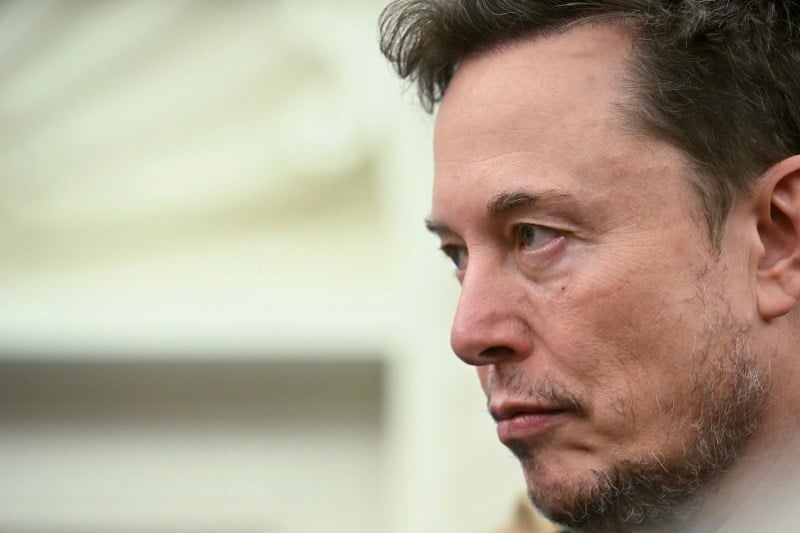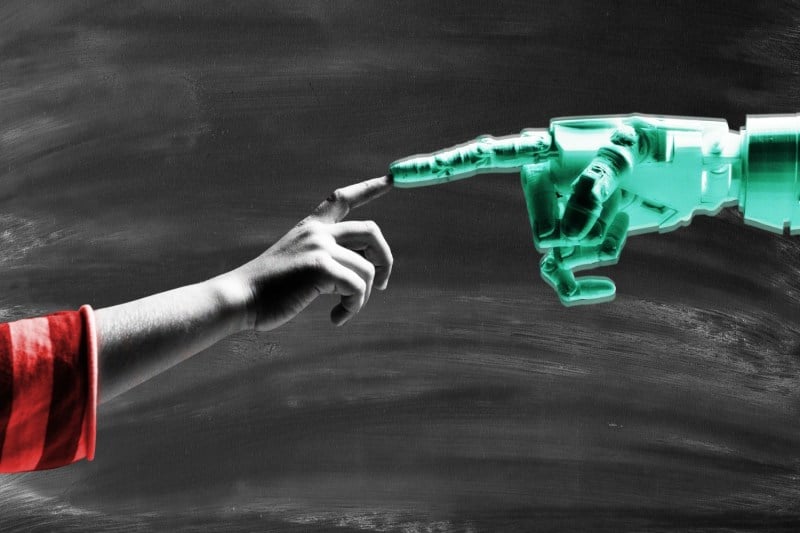Trump vs. the Courts: Lessons From the World

Trump vs. the Courts: Lessons From the World
Leaders have clashed with the judiciary in Brazil, Israel, Hungary, and Turkey. Here’s how that turned out.
In the past two months, the Trump White House has tested the power and independence of the judiciary. U.S. President Donald Trump has said he won’t defy the courts, but his team has certainly flirted with the idea, even calling for certain judges to be impeached.
Clashes between the executive and judiciary aren’t unique. In recent years, Brazil, Israel, and Turkey have each seen damaging showdowns between their leaders and their courts. But how do those countries compare with the United States—and are there lessons to learn from them?
In the past two months, the Trump White House has tested the power and independence of the judiciary. U.S. President Donald Trump has said he won’t defy the courts, but his team has certainly flirted with the idea, even calling for certain judges to be impeached.
Clashes between the executive and judiciary aren’t unique. In recent years, Brazil, Israel, and Turkey have each seen damaging showdowns between their leaders and their courts. But how do those countries compare with the United States—and are there lessons to learn from them?
Political scientist Andrew O’Donohue recently wrote in FP that there are several recent global precedents of constitutional crises, and the United States is dangerously unique because it doesn’t have the sources of support many of those countries have. I spoke to him about this on this week’s FP Live. Subscribers can watch the full discussion on the video box atop this page. What follows here is a lightly edited and condensed transcript.
Ravi Agrawal: Is the United States in a constitutional crisis?
Andrew O’Donohue: Yes, the United States is in a constitutional crisis, but it could get substantially worse for our democracy. Right now, the executive branch in the U.S. is challenging judicial constraints on its power very aggressively. Just this March, the executive quite clearly defied a federal judge’s order. The president himself has called for the impeachments of several judges. Now, what worries me, from a global perspective, is that this attack on the courts has been unusually swift and severe. And it could still get worse. Key figures like the vice president have said that they might defy court orders, which would risk a very serious constitutional showdown in which the executive argues that court orders are optional.
RA: But aren’t there many checks and balances along the way? Federal judges are attempting to halt aspects of what Trump is trying to do. Doesn’t that suggest that the courts are stronger than one might imagine?
AO: In a global perspective, the courts in the United States are extremely strong. The Trump administration has explicitly zeroed in on and attacked this. For example, a single federal judge can issue a nationwide injunction to block an executive policy, which courts have used in more than a dozen cases to block policies implemented by the new administration.
Now, what’s worrying to me is that the sources of support that sustain judicial constraints on the executive are troublingly absent in the United States, whether that’s support from elected officials in Congress, support from societal protesters, or support from actors within the government like government lawyers who could block illegal policies before they happen.
RA: Let’s look at how this issue has played out in other countries. In Israel, how did [Prime Minister] Benjamin Netanyahu clash with the courts?
AO: I was in Israel last week interviewing Israeli Supreme Court judges and politicians who have attempted to curb the court’s power. The key insight from Israel is that courts cannot protect democracy on their own. They rely on support from external actors.
In 2023, Netanyahu’s government attempted a sudden and severe attack on the courts that would have severely disempowered the judiciary, especially Israel’s Supreme Court. But there were two sources of support that protected the court and prevented Netanyahu’s government from implementing these court-curbing legislations. The first was societal protest. When Netanyahu’s justice minister announced a series of sweeping reforms, numerous sectors of Israeli society—trade unions, business leaders, tech leaders, even military reservists, law professors, economists—mobilized to oppose these reforms. Crucially, this societal protest didn’t change Netanyahu’s mind, but it did empower the courts to rule against the government, and those anti-government rulings in turn provided oxygen and encouragement to the protests.
Israel’s courts weren’t protected by societal mobilization alone. There was also crucial support from non-elected officials like government lawyers and military professionals. For example, Netanyahu’s own defense minister opposed efforts to curb the courts. The attorney general and legal advisors within the government also blocked potentially illegal policies, preventing a conflict with the courts. So Israel shows us that when an executive attempts to take over the courts, two very powerful sources of support for judicial independence are societal mobilization and non-elected officials within the government.
RA: Let’s look at another example: Brazil. Jair Bolsonaro, the previous president, attempted to defy the judiciary. He even threatened to impeach justices and tried to shut down the Supreme Court. How did Brazil’s judiciary hold its ground?
AO: Brazil is a very useful case for the United States precisely because it’s a federal system. It shows how elected officials, including mayors and governors, can put muscle behind court decisions. So, as you mentioned, Bolsonaro, much like his colleagues in the United States, threatened to impeach judges and even to defy court rulings. But the courts in Brazil survived this attack because leaders in Congress, like the leader of Brazil’s Senate, flatly rejected efforts to impeach judges. The courts also got key support from other elected actors, like mayors and governors in Brazil. During the COVID pandemic, when Bolsonaro challenged a court ruling that allowed local governments to implement their own COVID policies, local mayors and governors said, “We are following the court’s ruling. We will implement our own policies.” And that put muscle behind the court ruling.
RA: What about Turkey? President Recep Tayyip Erdogan purged thousands of judges over the last decade. A key thing here is that he took his time. How has that played out?
AO: I’ve also interviewed many judges in Turkey, and even they will say that the courts in Turkey today are not fully independent. So how did Erdogan do it? Erdogan shows that one of the most effective strategies leaders can use to curb the courts is what I call court-baiting, when a leader proposes a popular policy, but one that is only questionably legal.
So in Erdogan’s case, after he became prime minister in 2003, he proposed popular policies, like allowing Muslim women to wear headscarves in universities. That policy was supported by more than 75 percent of the Turkish public, but it also potentially went afoul of Turkey’s very secular constitution. So when the court struck down that policy, Erdogan was able to say persuasively that the court is blocking the national will, or milli irade in Turkish. Erdogan can then persuasively make the case and gain broad public support for a constitutional referendum that dramatically expanded the government’s power over the courts. Erdogan was able to play the long game in Turkey by baiting the court into making unpopular decisions.
I think that we’re seeing something similar in the United States, with issues like birthright citizenship or picking up non-citizen students and flying them to Louisiana. The government is trying to push legal boundaries in the United States on issues it believes will be popular with its base, if not with the broader electorate.
RA: When I look at a different pillar of democracy, a free press, one autocratic strategy is to portray the media as the enemy of the people. And the court-baiting strategy you just outlined there takes a similar approach: making the courts the enemy of the people.
AO: This is a pattern that governments, and populist governments in particular, use with a wide range of institutions. They strategically antagonize them, particularly on issues where those institutions are not in alignment with the average voter, to make the case that these elite institutions are out of touch with what the people want and thus need to be curbed in the name of democracy. Crucially, this is what Erdogan has done, what [Hungarian Prime Minister Viktor] Orban has done, is to crush courts and other institutions in the name of democracy.
RA: Let’s turn to Orban. Hungary has essentially become a kleptocracy, with complete elite capture of wealth and power. And so the closer you are to Orban, the more likely it is that your company will thrive. And then simultaneously, Hungary is one of the worst-performing economies in the EU. How have the courts figured into this strategy?
AO: When Orban rose to power in 2010, crucially, he had a constitution-making supermajority. It’s very difficult for the courts to hold on when the political leader has the authority to revise the constitution. Orban was then able to use that power to systematically dismantle constraints, rejig the election system in his favor, and crucially, win elections by pumping up the economy strategically with giveaways before elections.
The Orban case shows that once a political leader captures the courts, political competition is no longer free and fair. Orban’s regime is now what most political scientists would call competitive authoritarian, meaning that there are elections and it is possible for Orban to lose, but the playing field is heavily tilted in Orban’s favor because he controls the referees: the courts.
RA: So let’s connect the dots between these examples that we’ve discussed. It’s telling that there are so many examples of leaders with autocratic tendencies who zeroed in on the courts. Why? What is it about the courts? Why are so many leaders picking on judiciaries at the same time as each other?
AO: That’s right, Ravi. This is a global problem, with global drivers. This isn’t just happening in the United States. It’s happening in democracies around the world from Brazil, Mexico, India, Israel, to Hungary, Poland, and Turkey.
Now, there are three big drivers that explain why elected leaders around the world are clashing with the courts. The first is a weakening of the political establishment. A leader like Trump or Orban can reach a huge audience using digital technologies, without working with establishment political parties or establishment media outlets. And that means that this network of elites and political parties and the media can no longer really constrain an executive attack on the courts. Second, while the political establishment has weakened, courts have gotten much stronger. Before World War II, Italy and Germany simply didn’t have constitutional courts with powers to strike down fascist legislation. Now, more than 80 percent of constitutions give courts the power to strike down unconstitutional legislation. That means that courts are newly important as actors that an aspiring autocrat or executive would want to take down. Finally, there has been a sea change in how democracies die. In the Cold War, military coups accounted for about half of democratic breakdowns. But democracies are increasingly dying through gradual, legal means, and that means that courts are newly important as actors that can either block or enable an executive effort to strangle a democracy. These three factors explain why the attack on American courts has been unusually aggressive, unusually swift, and unusually severe.
RA: It’s interesting that these assaults on the law began in part because the law got too strong.
AO: Well, courts are a human technology that we have developed to protect interests, such as democracy. And the empowerment of the courts globally is a relatively new and recent phenomenon. And in many ways, it’s been driven by waves of democratization around the world, empowering the courts to protect political interests and to insulate them from elected majorities. And this is what makes these conflicts over the courts a true dilemma for democracy. On the one hand, when a president wins an election, they should be able to govern and implement the will of the people. But we also need courts that can keep political competition in bounds and make sure that democratic competition remains free and fair without overly blocking and suppressing the will of voters.
RA: When courts become politicized, that muddies the waters further and allows leaders to argue that they, not the courts, can enforce the will of the people.
Another theme that’s emerging is the analogy of a frog in hot water, with the water coming slowly to a boil. The frog doesn’t know what’s happened until it’s too late. People often imagine a constitutional crisis as this grand showdown between a president and a supreme court, but in many instances, the erosion of courts and their power happens gradually. How does that play out in different countries, in different types of systems? And how could that play out in the United States?
AO: A key insight from other democracies is that the frog-in-boiling-water strategy really works to the advantage of executives. When executives move slowly and methodically to take over courts like in Turkey, it’s much harder for civil society to mobilize. But there are cases like Israel in 2023 where the leader makes a strategic mistake. In Israel, Justice Minister Yariv Levin proposed a sweeping set of proposals that turned the water up to 100 degrees Celsius. And that was a focal point that allowed civil society in Israel to mobilize.
Now, in the United States, we are also seeing a swift and aggressive attack on the courts. The problem is one of coordination, but it’s also one of information about how bad things can get. In the United States, because we have not experienced the democratic backsliding that other democracies like Turkey or Israel have, many citizens don’t realize that we are frogs in water that is starting to get pretty hot.
RA: Throughout this discussion of Brazil, Israel, Turkey, there’s a sense of institutions that stand up for the courts, whether legislators, mayors, governors, popular power, or in some cases, the military. I found it worrying in your essay, Andrew, that you don’t think these checks and balances are particularly strong in the United States. Why are you so pessimistic about people power or legislative power in America?
AO: Let me clarify. I am very optimistic about the capacity of elected officials, societal mobilization, and non-elected officials to stand up and protect the Constitution and the courts in the United States. But I don’t immediately see evidence of those three sources of support for the courts in the U.S. today.
Let’s take support from elected officials. Although there are some Republicans, like Sen. [Lisa] Murkowski, Sen. [John] Thune, who have said the court ruling should be obeyed, the vast majority of Republicans, and especially influential Republicans in the White House like [Elon] Musk and [Stephen] Miller, are much more likely to support the current president’s rhetoric. In terms of societal mobilization, many Americans are afraid to speak out or are just exhausted. And there have yet to be the kinds of mass societal mobilization that we saw in Israel. And finally, there have been key examples in the United States of non-elected professionals who have stood up for the rule of law. I would put the New York prosecutor, Danielle Sassoon, in this category. But in that case, after refusing to drop the charges against New York’s mayor, Sassoon and other prosecutors in Manhattan resigned. So many people within the government who might serve as voices to defend the rule of law are resigning or are being forced out. And that’s deeply troubling.
RA: There have been a lot of high-profile attacks on law firms over the last few weeks. Have you seen strategies like that in other countries, where the executive attacks not only the courts, but also law firms?
AO: Absolutely. Law firms often are key actors in these fights over the courts. Now, the main insight here is that whether law firms and institutions more generally are able to resist democratic backsliding depends on whether they are able to unite. So in Israel, the major law firms united. The 17 leading law firms in Israel all signed public letters opposing efforts to reduce the power of the court. The Bar Association in Israel spoke out loudly against the attempt to reduce judicial power. So did almost 200 of the top law professors in Israel. So law firms, as providers of legal services, can be key actors by suing the government and holding it accountable in the courts.
But it matters whether law firms are divided or able to unite. Very worryingly, the Trump administration is taking a divide-and-rule strategy to the law firms by exerting targeted pressure on one law firm and extracting concessions. And by the way, this is the same divide-and-rule strategy that the administration is using to tighten the screws on universities. The only way for law firms or universities to mobilize and resist democratic backsliding is by uniting.
RA: What can or should courts do if this administration directly disobeys a court order?
AO: It isn’t just a question of what the court should do; it’s a question of what you should do. The key insight from these other democracies is that courts alone can’t defend the constitution. The protectors of the constitution also need protectors for themselves. The first lesson is that societal protest works, just not in the way you might think. If the executive tries to override the courts, the one key source for support will be societal protest, not because that’s going to change the executive’s mind, but because it might give more legitimacy to judges who demand compliance, or more legitimacy to a governor or mayor who wants to side with the court’s ruling. A second lesson: Judges have a key role to play when executives seek to override the courts. As Aharon Barak, the former president of Israel’s Supreme Court, told me, when democracy is threatened, judges can’t go into the bunker and say, we’ll reemerge later when the circumstances are better. You need to stand up and protect the constitution or you’re going to lose serious ground to the executive. So there’s a key role for judges in defending the constitution even when they’re seriously challenged, but those judges also need support from people like us.
RA: So Andrew, much of this conversation has been about what people can learn from the experiences of other countries when the executive clashes with the judiciary. But how does that feedback loop work between leaders who are trying to weaken democracy?
AO: That feedback loop is both physical support, but also support in terms of strategies and ideas. So let’s start with the tangible support that the United States and these autocratic leaders provide one another. In the European Union, for example, in two key cases of democratic backsliding, Hungary and Poland, those governments provided support for one another to oppose and resist sanctions from the EU for their democratic backsliding. In the United States today, the Trump administration is effectively giving a green light to illiberal leaders from Netanyahu in Israel to Erdogan in Turkey. And Erdogan in Turkey is taking advantage of this green light to lock up his main political opponent and imprison more than a thousand protesters. In Israel, Netanyahu points to the United States as a model of what he wants to do. In Israel, there is a supermajority requirement to appoint judges, so their election depends greatly on legal expertise and on consensus. Netanyahu argues he wants what the United States, one of the world’s leading democracies, has: wide presidential latitude for selection of Supreme Court judges on the basis of ideological alignment. So, illiberal leaders are providing support for one another, but are also leveraging one another as examples to legitimize their strategies.
Ravi Agrawal is the editor in chief of Foreign Policy. X: @RaviReports
More from Foreign Policy
-

An illustration shows a golden Cybertruck blasting through a U.S. seal of an eagle holding arrows and laurel. Is America a Kleptocracy?
Here’s how life could change for the rich, poor, and everyone in between.
-

The flag of the United States in New York City on Sept. 18, 2019. America Is Listing in a Gathering Storm
Alarms are clanging at the U.S. geographic military commands around the globe.
-

U.S. President Donald Trump shakes hands with Supreme Court Chief Justice John Roberts during Trump’s inauguration in Washington, D.C. The U.S. Judicial Crisis Is Uniquely Dangerous
But other democracies provide a roadmap for courts to prevail over attacks from the executive branch.
-

An illustration shows a golden Newtons cradle with Elon Musk depicted on the one at left and sending a globe-motif ball swinging at right. Elon Musk’s First Principles
The world’s richest man wants to apply the rules of physics to politics. What could go wrong?










Join the Conversation
Commenting on this and other recent articles is just one benefit of a Foreign Policy subscription.
Already a subscriber?
.
Subscribe
Subscribe
View Comments
Join the Conversation
Join the conversation on this and other recent Foreign Policy articles when you subscribe now.
Subscribe
Subscribe
Not your account?
View Comments
Join the Conversation
Please follow our comment guidelines, stay on topic, and be civil, courteous, and respectful of others’ beliefs.
Change your username |
Log out
Change your username:
CANCEL
Confirm your username to get started.
The default username below has been generated using the first name and last initial on your FP subscriber account. Usernames may be updated at any time and must not contain inappropriate or offensive language.